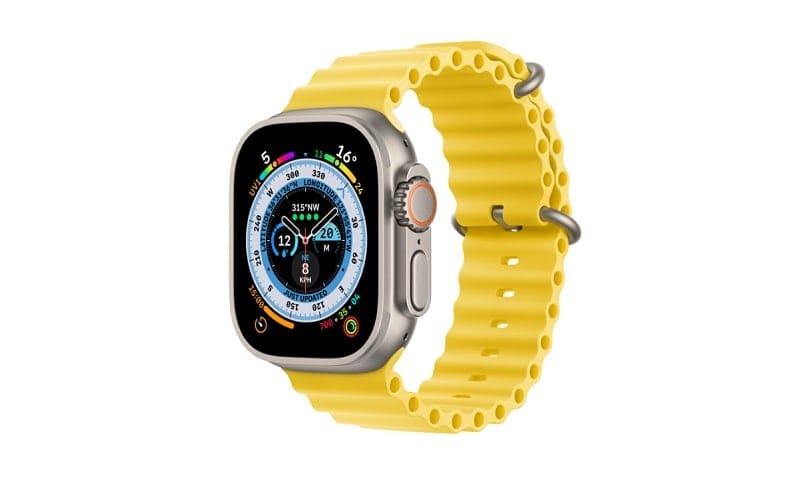In recent years, technological advancements have revolutionized the way we navigate and track our movements. GPS (Global Positioning System) is one such innovation that has become an integral part of our daily lives. The Apple Watch Ultra takes this technology a step further with the inclusion of dual frequency GPS. In this article, we will explore what dual frequency GPS is, how it works, and the benefits it brings to the Apple Watch Ultra.
Understanding GPS Technology
GPS is a satellite-based navigation system that provides precise location and time information anywhere on Earth. It relies on a network of satellites orbiting the Earth, along with ground-based receivers, to calculate accurate positioning data.
The Evolution of Dual-Frequency GPS
Dual-frequency GPS, also known as L1/L5 GPS, is an enhanced version of the traditional single-frequency GPS (L1). While single-frequency GPS uses signals from the L1 frequency band (1575.42 MHz), dual-frequency GPS utilizes both L1 and L5 frequency bands (1176.45 MHz). The L5 frequency was introduced to provide more accurate and reliable positioning capabilities.
How Dual-Frequency GPS Works
Dual-frequency GPS works by measuring the time it takes for signals to travel from satellites to the receiver. The receiver compares the time delays of signals transmitted at different frequencies, allowing it to calculate precise distance measurements. By analyzing the phase and code measurements from multiple satellites, the receiver determines the user’s exact location.
Benefits of Dual-Frequency GPS in Apple Watch Ultra
1. Enhancing Accuracy and Precision
Dual-frequency GPS significantly improves location accuracy compared to single-frequency GPS. The use of two frequencies helps mitigate errors caused by atmospheric disturbances, such as signal delays and reflections. With enhanced accuracy, users can rely on their Apple Watch Ultra to provide more precise location data during outdoor activities like running, hiking, or cycling.
2. Improved Tracking in Challenging Environments
In environments with obstructed or limited satellite visibility, such as dense urban areas or forests, single-frequency GPS may encounter difficulties. Dual-frequency GPS overcomes these challenges by effectively filtering out interference and multipath errors. It ensures uninterrupted tracking and provides a more reliable navigation experience.
3. Extended Battery Life
Dual-frequency GPS can contribute to improved battery life on the Apple Watch Ultra. By acquiring accurate positioning information more efficiently, the watch can optimize power consumption and reduce the strain on its battery. This allows users to enjoy longer usage times between charges.
4. Convenience and Practicality
With dual-frequency GPS, Apple Watch Ultra users can experience greater convenience and practicality in their daily lives. The precise location data enables seamless integration with various apps and services, such as mapping, fitness tracking, and location-based reminders. Whether navigating unfamiliar terrain or finding nearby points of interest, users can rely on their Apple Watch Ultra for accurate guidance.
5. User-Friendly Features
The Apple Watch Ultra utilizes dual-frequency GPS to enhance its user-friendly features. With improved location accuracy, features like automatic time zone adjustments, geotagging of photos, and location-based app functionalities become more efficient and reliable. Users can trust their Apple Watch Ultra to provide accurate contextual information based on their location.
Dual-Frequency GPS in Comparison to Single-Frequency GPS
Dual-frequency GPS offers several advantages over single-frequency GPS. While single-frequency GPS is still reliable and widely used, dual-frequency GPS provides enhanced accuracy, especially in challenging environments. It reduces errors caused by atmospheric disturbances and improves overall positioning precision.
Limitations and Considerations
Although dual-frequency GPS brings numerous benefits, it is important to consider a few limitations. The availability of L5 frequency signals may vary across different regions, and compatibility with older GPS devices may be limited. Additionally, dual-frequency GPS may consume slightly more power compared to single-frequency GPS.
Future Implications of Dual-Frequency GPS
As technology continues to advance, dual-frequency GPS is expected to become more prevalent in devices beyond the Apple Watch Ultra. We can anticipate its integration into various applications, ranging from autonomous vehicles and drones to augmented reality and precision agriculture. Dual-frequency GPS has the potential to revolutionize location-based services and enhance our daily lives further.
Conclusion
Dual-frequency GPS is a remarkable advancement in navigation technology, and its incorporation into the Apple Watch Ultra elevates the user experience to new heights. With enhanced accuracy, improved tracking capabilities, extended battery life, and user-friendly features, the Apple Watch Ultra becomes an indispensable companion for outdoor enthusiasts, fitness enthusiasts, and everyday users. The future possibilities of dual-frequency GPS are exciting, promising further innovation and advancements in the field of navigation and positioning.
FAQs
1. Does dual-frequency GPS work without an internet connection?
Yes, dual-frequency GPS works independently of an internet connection. It relies on satellite signals for positioning information.
2. Can I use dual-frequency GPS on older Apple Watch models?
Dual-frequency GPS is currently available exclusively on the Apple Watch Ultra. Older Apple Watch models may not support this feature.
3. Does dual-frequency GPS drain the battery faster?
While dual-frequency GPS may consume slightly more power than single-frequency GPS, the Apple Watch Ultra optimizes power usage to ensure extended battery life.
4. Can dual-frequency GPS be used indoors?
Dual-frequency GPS relies on satellite signals, so its effectiveness may be limited indoors or in areas with obstructed satellite visibility.
5. Is dual-frequency GPS available worldwide?
Dual-frequency GPS is available in select regions, and the availability of L5 frequency signals may vary. It is advisable to check the compatibility and coverage in your area.








